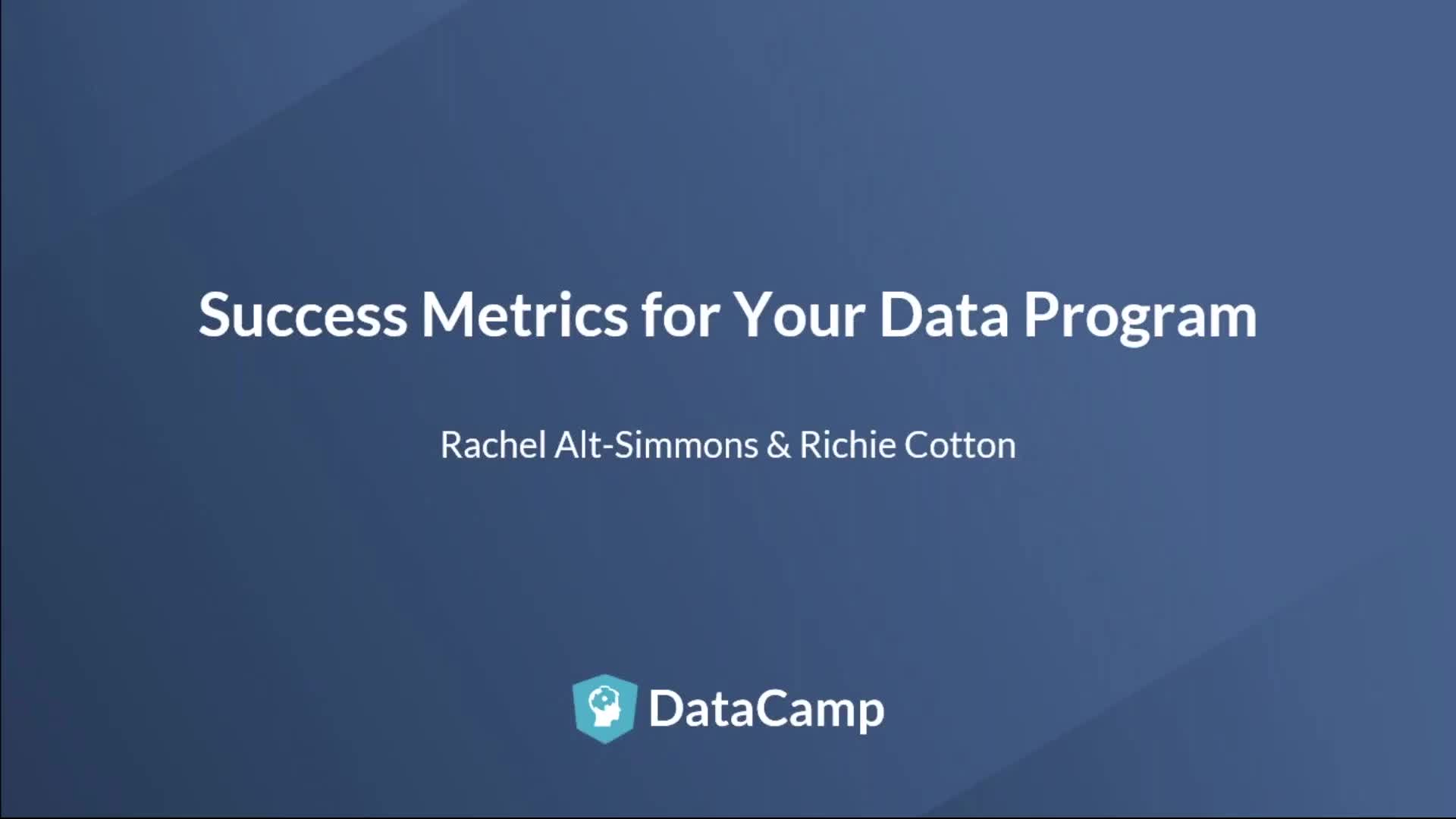Falantes


Rachel Alt-Simmons
Head of Strategic Design, Data, Pricing & Analytics at AXA XL
Treinar 2 ou mais pessoas?
Obtenha acesso à biblioteca completa do DataCamp, com relatórios, atribuições, projetos e muito mais centralizadosRelacionado
white paper
Your Organization's Guide to Data Maturity
Learn how evaluate and scale data maturity throughout your organizationwebinar
Train Your Workforce to Thrive in a Data-Driven Age
Develop a scalable data training program and measure its effectiveness.webinar
Measuring the ROI of Data Literacy Programs
Practical steps to help you measure the ROI of L&D programs for data skills.webinar
Measuring the ROI of Data Literacy Programs
Practical steps to help you measure the ROI of L&D programs for data skillswebinar
Fostering Confidence with Data Across Your Organization
Learn how to empower your entire organization with data literacy.webinar
The 5 Dimensions of Data Maturity
Discover the path to becoming a data-driven organization.Join 5000+ companies and 80% of the Fortune 1000 who use DataCamp to upskill their teams.
Loved by thousands of companies
